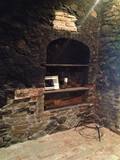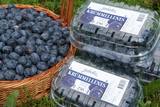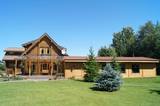| Nr | Name | Beschreibung |
|---|---|---|
|
Auf der Route kann man einzigartige und in Lettland bisher noch nicht gesehene Landschaften sehen! Die eindrucksvolle Steilküste der Ostsee beginnt einige Kilometer nördlich des Dorfs Pāvilosta, endet kurz vor dem Dorf Ošvalki und sie ist fast zwanzig Kilometer lang. Ihre eindrucksvollsten und einzigartigsten Formen sind auf der Strecke Strante – Ulmale zu besichtigen. Die ganze Route führt auf der ehemaligen westlichen Grenze des Eisernen Vorhangs, weil die Küste der Ostsee während der Sowjetzeit eine Militärzone und einfachen Menschen nicht zugänglich war. Auch heute kann man noch die Reste der Militärobjekte und die alten Wege der Panzer in den Küstendünen sehen. In der Umgebung von Ventspils und Užava dehnen sich kilometerlang die in den baltischen Ländern größten Biotope der grauen Dünen. Diese Landschaften sind ungewöhnlich und anderswo in Europa ganz selten zu sehen. Hier kann man mehr als zehn Kilometer wandern, ohne einen Menschen zu treffen. Route information from Latvijas Lauku forums |
||
|
Atrodas netālu no Biksēres muižas, blakus muižas parkam. Ozolkalna klēts saimniece Līga Kuba aušanas prasmes pirms pāris gadiem apguvusi Sarkaņu amatu skolā. Šeit radusies iecere par privātas aušanas darbnīcas izveidi, kas arī īstenota. Saimniece savas aušanas prasmes nodod jebkuram interesentam. Apmeklētāji var iegādāties šeit darinātos suvenīrus. |
||
|
Atpūtas vietā ir apskatāmas 370 no koka veidotas skulptūras. Ir izveidoti 5 labirinti- 630 m garš pikants labirints ar “pipariņu” tikai pieaugušajiem, tulpju meditatīvais labirints, “Šausmu labirints”mežā, bērniem- 25 m garš labirints ar maldīšanos upenēs “Tracis”, zaru labirints “Dižputna ligzda”. 60 dažādas lielformāta brīvdabas spēles un atrakcijas. Dabas taka “Putnu iela”, kurā apskatāmi Latvijas dobumperētāju putnu būrīši. |
||
|
This is the highest church tower in Latvia, and from it you can see views of the Alūksne highlands. The view to the South is particularly impressive.
|
||
|
The Jūrkalne People's Centre is the main gathering place for Suiti people and is in a former saloon that was built around 1875. Major restorations were conducted in 2011. The centre offers various events, there is an exhibition hall for visitors, and the "Maģie Suiti" ethnographic ensemble and other amateur ensembles are active there. If you want to meet the Suiti and learn about their traditions, contact the centre in advance. |
||
|
Die Stadt des Windes, der Bernsteine und der Musiker. In den schriftlichen Quellen ist Liepāja zum ersten Mal im Jahr 1253 erwähnt worden. Die Stadt blühte als ein Handelshafen schon am Ende des 16. Jhs. auf. Sehr bedeutend für die Stadt war die Regierungszeit der kurländischen Herzoge Jacob und Friedrich Kasimir, als durch den Hafen von Liepāja der Export- und Importhandel mit litauischen und kurländischen Waren gewährleistet wurde. An der Stelle, wo der Fluss Līva mit Dünensand zugeschüttet worden war, wurde ein Kanal ausgegraben und eine Anlegestelle für Schiffe gebaut. Das Wachstum der Stadt setzte sich im 18. Jh. auch nach dem Nordischen Krieg und der Pestzeit fort. Als im Jahr 1795 Kurland in das Russische Reich eingegliedert wurde, hat sich der Hafen von Liepāja als einer der bedeutendsten westlichen Häfen des Reiches noch schneller entwickelt. Am Ende des 18. Jhs. bis zum 19. Jh. wurde Liepāja gleichzeitig auch zu einem beliebten Erholungsort der St. Petersburger Aristokraten. Am Ende des 19. Jh. wurde mit dem Bau des Kriegshafens und der Festung begonnen. Die Stadt wurde zu einem militärstrategischen Ort. Die Stadt hat wesentlich im Zweiten Weltkrieg gelitten. Im Jahr 1967 beendete der Seehandelshafen von Liepāja seine Tätigkeit und die Stadt Liepāja wurde zu einer geschlossenen Stadt, wo der Kriegshafen als eine ‘Stadt in der Stadt‘ war. Heute ist der Kriegshafen und das dort geschaffene Angebot eine der Top-Sehenswürdigkeiten in der lettischen Tourismusbranche. |
||
|
Workshops und Hauscafés sind überall in Estland verbreitet, doch hauptsächlich sind sie in der Region Peipsimaa zu treffen. In den Workshops bereiten die Teilnehmer mit Hilfe des Kursleiters 3–4 Gerichte zu, die sie nachher gemeinsam miteinander genießen. Der Schwerpunkt liegt dabei auf örtlichen Produkten der Peipsimaa-Gegend und beliebten Rezepten. Die Workshops finden meistens draußen statt, es werden Feuer, Grill entzündet und Kochkessel und Samowar benutzt. Im Winter finden die Workshops sogar auf dem Eis des Peipussees statt. |
||
|
Befindet sich im Zentrum der Ortschaft Piņķi, an der Rīgas Straße. Das Denkmal ist den Ereignissen des Jahres 1919 gewidmet, wenn am 22. Mai nach einer fast zweimonatigen Ruheperiode ging die Brigade des Obersten Balodis in die Offensive, um die Hauptstadt Rīga von den Bolschewiken zu befreien. Eine Unterstützung für die Brigade des Obersten Balodis sollten sowohl Deutsche Landeswehr und Eiserne Division als auch Russische Abteilung des Fürsten Lieven geben. Das erste Denkmal wurde vom Präsident der Republik Lettland Kārlis Ulmanis am 23. Mai 1939 eröffnet. Im Jahre 1951 hat die sowjetische Macht das Denkmal vernichtet, aber im Jahre 2003 wurde eine Kopie des Denkmals errichtet (Bildhauer J. Briedis, Kopie von O. Skarainis). |
||
|
Das Café Bastions befindet sich im historischen Zentrum von Valmiera in einer ehemaligen mittelalterlichen Festung. Es bietet eine große Auswahl an lettischen Gerichten zum Frühstück, Mittag- und Abendessen an. Das Café kooperiert mit den lokalen Bauern und Herstellern von landwirtschaftlichen Produkten. Im Sommer kann man die Mahlzeit auf der Terrasse mit einem herrlichen Ausblick auf den Dzirnavu-See genießen. |
||
|
Auf dieser Tour wandern Sie durch die Kurische Nehrung von Nida nach Smiltynė. Der Nationalpark Kurische Nehrung liegt auf einer langen Sanddüne, die das Kurische Haff von der Ostseeküste trennt. An der westlichen Seite der Nehrung erstreckt sich ein Sandstrand von ~50 km, während das Ufer des Kurischen Haffs flach ist. Hier finden Sie kleinere Buchten, die mit Schilf bewachsen sind. Der baltische Küstenwanderweg beginnt im Zentrum von Nida in der Nähe des Hafens. In Nida schlängelt sich der Weg weiter am Ufer des Kurischen Haffs entlang und öffnet einen schönen Blick auf das weite Wasser. Von Nida bis zum Kap von Bulvikio windet sich der baltische Küstenwanderweg auf kleineren Waldwegen, durch mit Kiefern bewachsenen Dünen auf und ab. In der Siedlung von Preila verläuft der Pfad an der Promenade entlang. Im Abschnitt von Pervalka bis Juodkrantė führt der baltische Küstenwanderweg entlang eines schönen Sandstrands. In Juodkrantė können Sie auch den Pfad zum Raganų kalnas (Hexenberg) ausprobieren. Die Route wechselt zwischen der Ostseeküste, den Dünen und den Kurischen Haff, bis sie schließlich die Fähre erreicht, die Sie zum Festland nach Klaipėda bringt. |
||
|
Das Restaurant befindet sich in der alten Schule des Landgutes, das mit dem Herrenhaus und dem Park ein einzigartiges kulturgeschichtliches Denkmal bildet. Lettische Küche: Kartoffelpfannkuchen mit geräuchertem Fleisch und Preiselbeermarmelade, Pfifferlingsuppe, Gemüsesuppe, Graupengrütze mit Zukost aus Fleisch, Forelle aus dem Flusse Brasla, Schweinebraten mit Rhabarbersoße, Grießpudding Buberts, Dessert mit Beerensoße. |
||
|
Innovative und köstliche Hanf- und Buchweizenprodukte, die sowohl lecker sind als auch dem Bauch gut tun. |
||
|
This beautiful farm near the hillocks of Lake Kālis grows raspberries, strawberries, cranberries and blackberries. During the season, you can pick, taste and buy the berries. Informational tours are also available. |
||
|
The castle hill of Spriņģi. It is located near Rēzekne town and it is
interesting with its peculiar shape of the ruins.Archeological monument of local significance.
|
||
|
Ķurmrags is one of the most distinct capes along the Vidzeme shore of the
|
||
|
Befindet sich in einem 1911 errichteten Gebäude der Molkerei. Herstellung von Milch, Kefir, Buttermilch, saure Sahne, Sahne, Quark, süße Quarkcreme, Butter, Joghurt und Käse. Die Produktion kann man in einem Geschäft der Molkerei (in der Nähe vom Unternehmen) kaufen. Im Geschäft kann man auch die von den Kooperationspartnern (A/s „Smiltenes piens” und SIA „Latvijas piens”) hergestellten Käsespezialitäten kaufen. Eines der fünf lettischen Unternehmen, das den weichen Kümmelkäse "Jāņu" herstellen darf, der als garantiert traditionelle Spezialiät in das EU-Register eingetragen ist. Die Erzeugnisse des Unternehmens haben die Qualitätszeichen „Grüner Löffel” und „Latvijas labums” erhalten. Für die Gruppen – Verkostungen und Einblick in die Tätigkeit der Milchgenossenschaft. |
||
|
Atrodas Lielvārdes parkā pie Rumbiņas ietekas Daugavā. Līdzīgi kā citur, arī šeit 13. gs. pirmajā pusē bīskapa pili cēla nodedzinātās lībiešu koka pils vietā. Mūra pili nopostīja Livonijas kara laikā - 1577. g. Tikai 1987. g. notika drupu konservācija. Lielvārdes parka veidošanu uzsāka 19. gs. beigās Lielvārdes muižas barona Artura fon Vulfa vadībā. Sagaidot eposa „Lāčplēsis” simtgadi tajā izvietoja sešpadsmit no ozolkoka veidotas skulptūras (t.s. Skulptūru dārzs) (autori V. Ansavs, P. Mellis, Ē. Delpers, A. Dauvarte). Aiz pilsdrupām Daugavas krastā ir stāva krauja ar dolomīta iežuatsegumu. Līdz HES ūdenskrātuvei var nokļūt pa kāpnēm. Lielvārdes muižas pils līdz mūsdienām nav saglabājusies. |
||
|
Auf dieser Tour werden lokale Traditionen der Weinherstellung mit dem Charme des Landlebens und einiger mittelalterlichen Schlösser und Landgüter kombiniert. Die Tour führt nach Sigulda, wo sich an den steilen Ufern des Urstromtals des Flusses Gauja drei Burgen befinden. Sie besuchen die mittelalterlichen Burgen von Turaida und Sigulda und danach fahren Sie zum Landgut von Krimulda, wo Sie Weine verkosten können. Sie besuchen auch eine Familie in Sigulda, die Wein herstellt. Am nächsten Tag haben Sie eine Führung in dem historischen Dorf Ligatne und verkosten lokale Weine in einer Sandsteinhöhle, die dieser Region charakteristisch ist. Weiter führt die Tour zu den eindrucksvollen Ruinen der mittelalterlichen Burg von Cesis und zum Landgut von Ungurmuiza, das das einzige erhaltene barocke Landgut aus Holz in den baltischen Staaten ist. Sie übernachten in dem ehemaligen Landgut von Dikli, das heute ein luxuriöses Hotel ist. Am nächsten Tag führt die Tour entlang der Küste, wo sich das Museum des größten Lügners der Welt – Münchhausen befindet. Sie können auch einen Spaziergang an der sandigen Küste unternehmen. Danach besuchen Sie einen lokalen Weinhersteller und verkosten verschiedene Weine, aber im Landgut von Birini genießen Sie eine Mahlzeit. Sie können vor der Rückfahrt nach Riga einen entspannenden Spaziergang in dem großen Park dieses Landgutes unternehmen. |
||
|
Das Gästehaus "Aizvēji" liegt nur 50 km von Riga und 200 m vom Sandstrand der Küste von Vidzeme entfernt, in einer ruhigen, landschaftlich gestalteten Umgebung. Ein Komplex für Feste und Erholung, Tennisplatz, Verpflegung für Veranstaltungen. Blockhaus mit zwei Bankettsälen und gemütlichen Räumen. Das Sommercafé befindet sich getrennt vom Gästehaus. |
||
|
Einer der größten Hersteller der Produkte der Ziegenzucht in Lettland. Es werden ~ 160 rassereine Ziegen (Alpenziegen, Anglo Nubier Ziege, Weiße Deutsche Edelziege) und Hauseber (für die Zuchtarbeit) gezüchtet. Exkursion und Teilnahme an die Ziegen-Beweidung. Von März an kann man die Ziegenkitze anschauen. Verkostung von verschiedenen Käsespezialitäten, Schaumelken (ab 17:00). Verkostung und Erwerb von Fleischkonserven. Produkte ohne Konservierungsstoffe! |
||
























